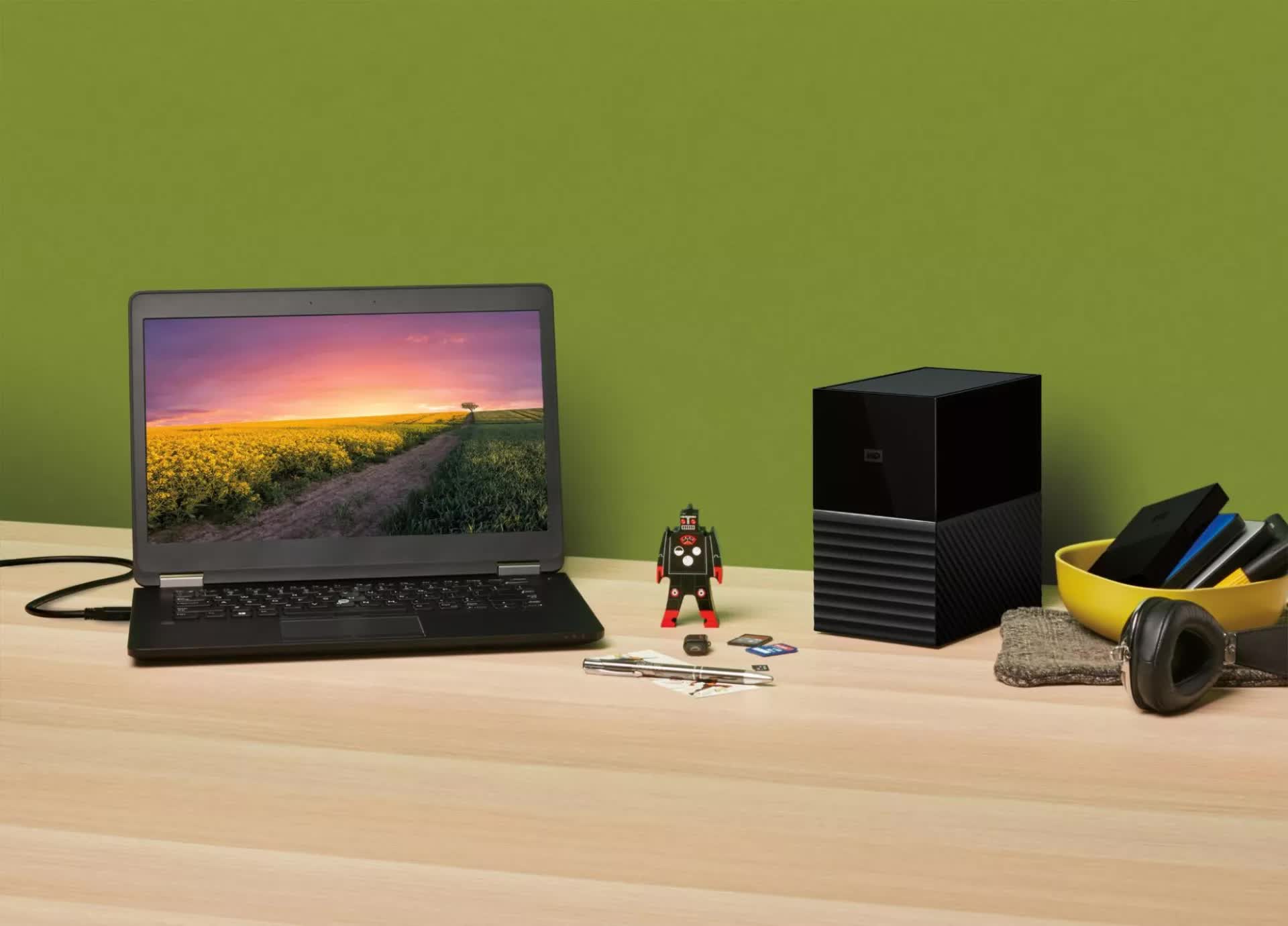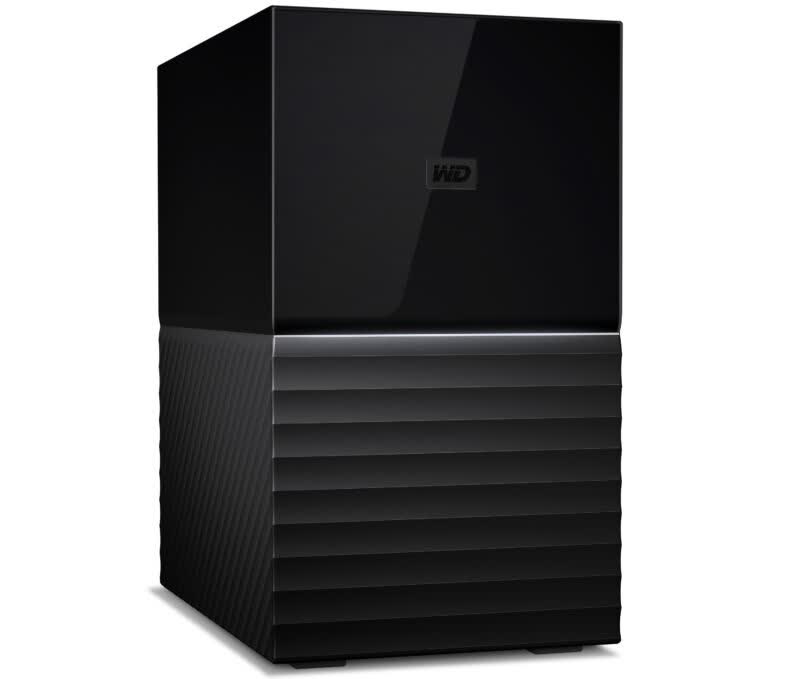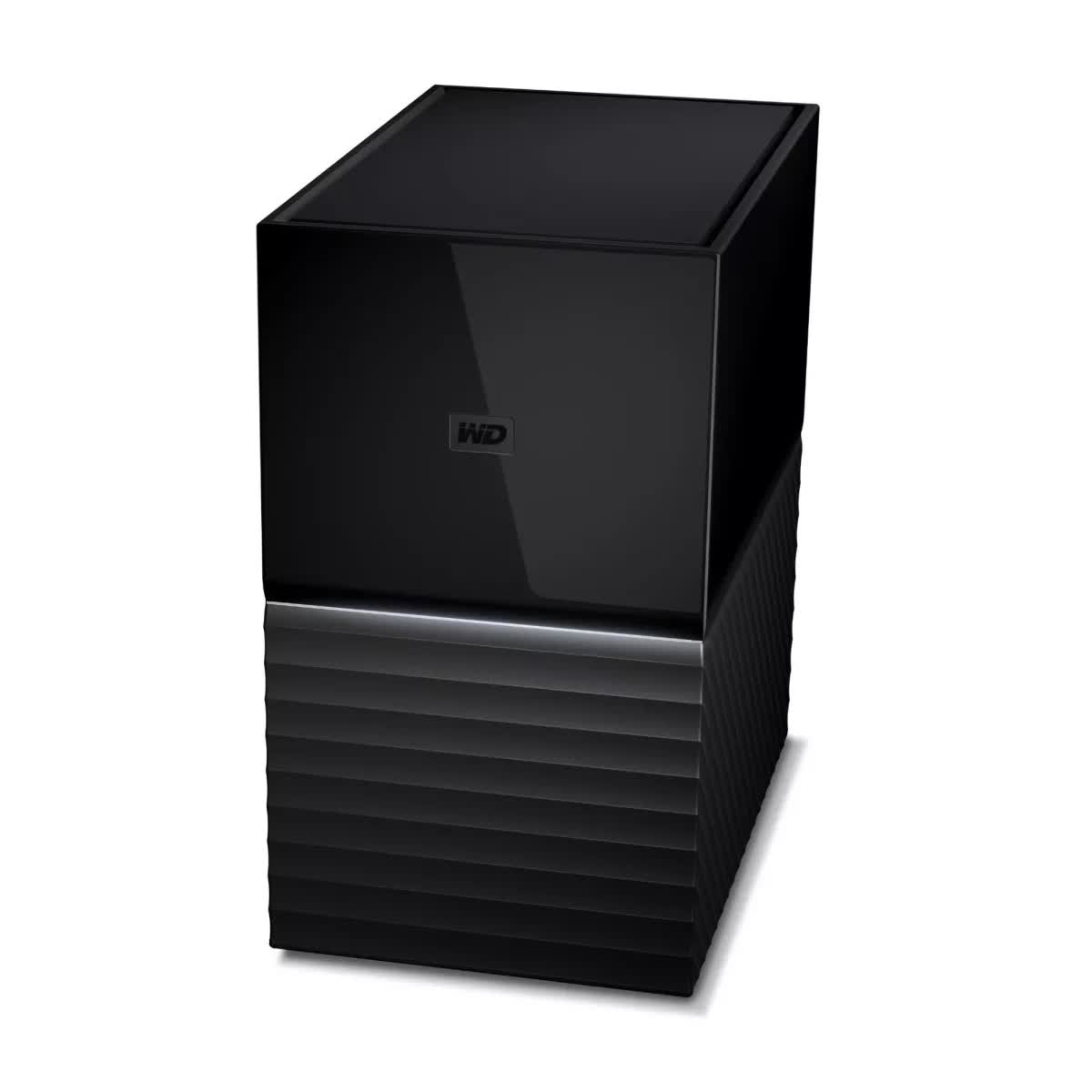In brief: Are you the digital equivalent of a hoarder, unable or unwilling to delete the gigabytes of files compulsively collected over the years? If so, you might be interested to know about the new external hard disk drive from Western Digital that boasts an incredible 44TB of storage. Sadly, it costs about the same price as many PCs—or an RTX 4080.
Western Digital had already been selling versions of the dual-drive My Book Duo that offer between 16TB and 36TB of storage capacity. But the latest entry in the lineup packs two 22TB drives for a massive 44TB of unformatted capacity to "help consumers preserve their ever-growing digital world," as WD puts it.
The My Book Duo
The company has also introduced a new 22TB-capacity single-drive My Book model, which it says is its highest-capacity consumer drive to date. However, Tom's Hardware writes that WD has been selling 22TB network-attached storage drives since July last year. The sealed and ready-to-use My Book external drives are likely to prove more popular than single NAS drives, though.
The 44TB My Book Duo comes with a USB-C port with support for up to 5Gbps transfers and two USB 3.2 Gen 1/USB 3.0 Type-A ports, turning it into a quasi-docking station. It ships in a RAID 0 configuration designed to squeeze more speed out of those HDDs and let systems see them as a single drive, but users can switch to RAID 1 for redundancy and see both drives individually. It also features 256-bit AES Hardware Encryption with password protection software.
The single-drive My Book
Such vast amounts of storage in an external enclosure don't come cheap. The 22TB single-drive My Book costs $599, which is around $100 more than the 22TB internal hard drive Western Digital sells. The 44TB My Book Duo is a painful $1,499. They are available now and work with Windows 10 and Windows 11, as well as macOS 11 and later (via the NTFS driver), allowing users to work between the Microsoft and Apple operating systems without needing to reformat.
External HDDs might be a lot slower than their solid-state counterparts, but they make up for it in capacity and price. As Ars Technica notes, WD's largest external SDD reaches 32TB and costs $7,500, though that model is aimed at professional users.
One reason to splash out on a 44TB external HDD comes from a recent research report on hard drive failure rates. It found that smaller-capacity HDDs are more suspensible to failure as they age.
https://www.techspot.com/news/97628-western-digital-unveils-44tb-external-hdd-flagship-graphics.html


